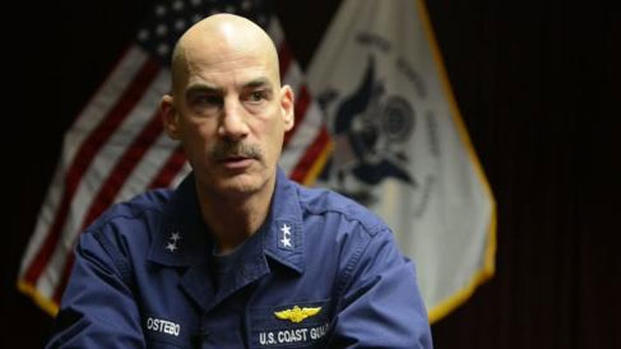JUNEAU, Alaska — The Coast Guard completed Arctic Shield 2013 after a successful summer season of sustained operations and outreach efforts in the Arctic region Friday.
Arctic Shield focused on Western Alaska and the Bering Strait and consisted of a three-pronged approach of operations, outreach and an assessment of the Coast Guard's capabilities in the Arctic. This regional operation aligns with the Coast Guard Arctic Strategy and its three key objectives: improving awareness, modernizing governance and broadening partnerships.
“Our annual operation in the Arctic provides us with an opportunity to appropriately address the threats and hazards in the region,” said Rear Adm. Thomas Ostebo, commander, Coast Guard 17th District. “Our presence also allows us to listen to tribal and local government concerns and better understand what the emergence of the Arctic means for the nation and the state of Alaska.”
Several Coast Guard cutters were deployed to the Arctic, including: the ice breakers Polar Star and Healy; the National Security Cutter Waeshe; the patrol boat Naushon; and the seagoing buoy tender SPAR. The crews aboard the various vessels conducted the Coast Guard’s statutory missions while providing an operational presence and command and control capability in an area where the Coast Guard lacks the permanent infrastructure of a coastal sector.
Coast Guard C-130 Hercules airplane crews were strategically positioned at Eielson Air Force Base in Fairbanks and a forward operating location with MH-60 Jayhawk helicopter crews was established at the Alaska National Guard hangar in Kotzebue to conduct search and rescue, law enforcement, and maritime domain awareness flights.
“For the second year in a row, Coast Guard crews stood the watch and were ready to support search and rescue, environmental protection and law enforcement operations in the Arctic,” said Ostebo.
Outreach efforts included meetings with local, state, federal and tribal partners to address local concerns and broaden awareness about the Coast Guard’s planned activities in the region. Coast Guard personnel also provided water safety education classes and conducted vessel inspections to reinforce the importance of good safety practices.
“As the lead federal agency in the Arctic, outreach is critical to mission success,” said Ostebo. “We want our partners and stakeholders to understand that Arctic Shield is a measured and thoughtful approach to conducting our statutory missions. We are adjusting to risk, capturing lessons learned and continuing to adapt to fulfill our obligation in the region.”
Arctic Shield capability assessments included the deployment of a vessel of opportunity skimming system aboard the cutter SPAR and a Canadian coast guard vessel. The training exercise reinforced crew familiarization with the equipment and built upon the Coast Guard’s international partnership with Canada.
The crew of the Healy conducted their science missions and partnered with the Coast Guard Research and Development Center to evaluate equipment. Personnel tested two small unmanned aircraft systems, an unmanned underwater vehicle, a remotely operated vehicle and a Helix skimmer equipped for oil recovery on ice. The crew of the Polar Star tested the overall readiness of the icebreaker.
The crew of the 110-foot patrol boat Naushon completed a historic patrol to the region and opened a broader range of assets for deployment to the increasingly busy Arctic.
“Deploying the patrol boat was a strategic move on our part,” said Ostebo. “We learned that a patrol boat is effective in the Arctic in the right season and with proper support and is a great force multiplier for us.”
The Coast Guard led, federal, state, tribal and local agencies, as well as industry representatives, in a spill of national significance seminar in Anchorage, which identified improvements for regional coordination on major oil spills. The Coast Guard also conducted mass rescue workshops in Kotzebue, Unalaska, Nome and Barrow. The exercises helped local governments and responders identify potential opportunities for improvement in preparedness and response to a maritime emergency.
“The Coast Guard has an obligation to be in the Arctic, to provide the same services that we provide everywhere else in the country,” said Ostebo. “We will be in the region to address all threats and all hazards throughout the Arctic, the Bering Strait and the Bering Sea to manage the growing maritime activity.”




























